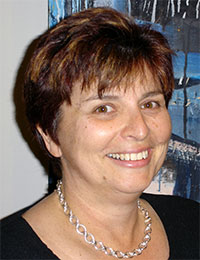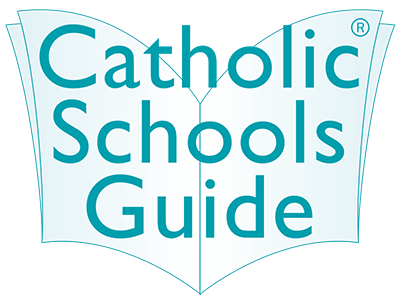News and Media

Religion and Faith in Schools: Changing Functions and Roles by Professor Peta Goldburg
Religious Education is one of the distinguishing features of the Catholic school and this has been so since the formation of Catholic schools in Australia.
Much discussion of Religious Education in the past fifty years has centred around the term, nature and function of ‘religious education’ as it occurs in school classrooms. Over this time, the activity of religious instruction in classrooms has carried various names from Catechism, Catechetics, Religious Instruction, Christian Living to Religious Education. The changes in name reflect different approaches to teaching and learning in Religious Education.
Catechism and Catechetics both emerge from the Greek word ‘catechesis’ which means ‘to echo’. In the early church, when most people had limited access to the written word and very few people could read or write, a catechetical approach to teaching the Catholic faith was adopted. The approach involved a focus on the spoken word when potential new-comers to faith learned the tenets of the faith by echoing the words of the priest teacher. They also learned the stories recorded in scripture through the arts: images of the nativity, the crucifixion and the resurrection were painted on church walls and these images retold the life of the Jesus and, in turn, reminded people how they should live their lives. Later, in the early 1500s during the Reformation, Martin Luther produced the first Catechism: in fact, he produced three different types of Catechism – one for preachers, another for teachers, and a third for children.
The Catechism consisted of a series of questions and answers which children learned and recited. Rote learning of this type continued until the early 1960s and was a common form of instruction for many subject areas, not just religion – we learned our tables, spelling, geography and history in a similar way. In many ways, we did not know a great deal about how children learned, and so we treated children like mini adults and taught them in a manner which was more suitable for adults.
In the late 1950s, religious educators began to investigate different approaches to teaching and learning, and they learned a great deal from developments in other subject areas. Eventually, religion books developed specifically for children were written, and many may remember the My Way to God series which was a landmark development in the teaching of religion in the 1960s. These books contained Bible stories, prayers and coloured illustrations, and the accompanying teacher texts explained how teachers could best use the books with children.
Changes too took place in the teaching of religion for students in secondary schools in the 1960s. The title Christian Living reflects one of these changes. Rather than a focus on rote learning, Christian Living attempted to start with the life experience of the student and often involved sharing personal stories. One of the weaknesses in this approach was that it often lacked serious content and, therefore, was not taken seriously. By the early 1970s, changes in the make-up of the population of Catholic schools was also beginning to occur: no longer could we presume that all the students in the religion class were Catholic, nor that they were all practising Catholics. Catechetical models of Religious Education are sometimes referred to as faith-forming models, and generally involve a community of believers and aim to help people grow in their faith. The strong emphasis placed on sharing and development of faith presumes that the students concerned are willing participants in the catechetical process.
The student population of Catholic schools in Australia today reflects the diversity of beliefs and practices both within and outside the Catholic faith. By the mid 1970s, some religious educators began to separate catechesis (faith formation) from religious education (learning about and from religion). The American religious educator Gabriel Moran describes Religious Education as having a twofold complementary function: teaching people about religion (which is what predominantly should occur in the religion classroom) and teaching people how to be religious in a particular way (which is the function of the Catholic schools as a whole in partnership with families and parishes). This definition is helpful because it enables a robust teaching about religion to take place in the classroom and does not presume that all of the students belong to the one faith tradition. It also enables students to learn about religions other than their own which is necessary if we are to negotiate living peacefully in today’s world.
By the mid 1980s, in most states in Australia, Religion Studies or Study of Religion programs had been developed for Years 11 and 12 students. These new religion courses taught about the five major world religions from an objective stand point, and enabled students to investigate and critique elements of the major world religions.
In today’s religiously diverse world, it is imperative that students have a working knowledge of the world’s major religions. Religious Education in Catholic schools, involves first and foremost learning about the ‘home tradition’, i.e. Catholicism, and as students become more mature, they begin to learn about the religions of others while continuing to learn about Catholic Christianity.
To be well educated in today’s world, students need to be aware of the religious diversity of our social context. This requires a level of religious literacy to enable them to function effectively in our current environment. Learning about religion can break down barriers, assist us to understand the social contract and encourage social cohesion. Students, therefore, need to learn about and from religion which includes the ‘home tradition’ as well as the religious traditions of others.

The foundation Chair of Religious Education at Australian Catholic University, Peta has experience as a primary, secondary and tertiary educator, and has presented to teachers both nationally and internationally. She was awarded a Carrick Citation for excellence in teaching in 2006 and Australian Catholic University’s Excellence in Teaching Award 2005. Peta’s research interests are focused on teaching scripture through representations of scriptural texts in the arts, as well as developing innovative pedagogies for teaching world religions. She is the national president of the Australian Association for Religious Education, a key body for representing religious educators in Australia. She has chaired the writing of the Study of Religion Syllabus for senior secondary students for the Queensland Studies Authority in 2001 and 2008, and recently was invited by Cambridge University Press to write two books for senior secondary students Investigating Religion and Exploring Religion and Ethics.
Peta has a number of books, book chapters and journal articles to her credit, and has also delivered key note addresses at many national and international conferences and public forums. Peta is currently Associate Dean, Catholic Identity and Partnerships at ACU’s Faculty of Education.

